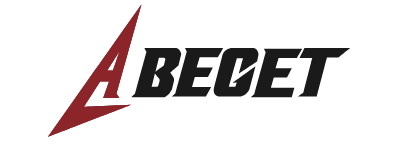What Do Knotted Muscles Look Like?

Muscle knots, also known as myofascial trigger points, are a common issue for many people. We will look into the physical appearance of muscle knots, learning what they look like, how they form, and how they effect our health. Understanding the characteristics of muscle knots is crucial for effective management and prevention. Let's take a closer look at muscle knots to discover what they really look like.
abeget.com
Common Causes
It is vital to understand the causes of muscular knots to prevent and treat them. Some of the most common causes are as follows:
- Muscle Overuse: Muscle knots can form as a result of repetitive actions or excessive strain on a muscle, such as in sports or certain occupational activities.
- Imbalances in Muscle Strength or Flexibility: Imbalances in muscle strength or flexibility may result in knot formation. Weak muscles are more likely to overwork, resulting in tension and knots.
- Trauma or Injury: Trauma or injury to the muscles can also result in knots in the muscles. Knots may form as a result of scar tissue expansion.
- Poor Posture: Holding a bad posture for an extended amount of time can put undue strain on specific muscle groups, causing knots to form, especially in the neck and back.
Emotional stress and anxiety can tense and contract muscles, increasing the likelihood of muscle knots developing.
What it Look Like?
While muscle knots are mainly felt rather than seen, they can be predicted based on certain observable traits. Muscle knots typically appear as follows:
Palpable Nodules
Muscle knots are often palpable, which means they can be felt with the touch. They frequently appear as small, stiff, or hard lumps or nodules beneath the skin's surface. The diameter of these nodules might range from a few millimeters to a centimeter or more.
Tenderness
When you press on a muscle knot, it becomes tender or unpleasant. The application of pressure with your fingertips or through massage may create discomfort or suffering, suggesting the presence of a knot.
Referral Ache
Muscle knots can cause pain to extend throughout the body. For example, a knot in the upper back or neck may induce referred pain, resulting in tension headaches or shoulder discomfort.
Formation of Knots
Muscle knots, despite their lack of visibility on the surface, are essentially tight clusters of muscle fibers that have contracted and become entangled. When a muscle is tight, it may feel lumpy or rough to the touch.
It's important to remember that the appearance of muscle knots can vary depending on their size, depth, and position within the muscle tissue. While not as visible as a bruise or a skin blemish, muscle knots' body feelings and soreness are key indicators of their presence.
Strategies
The following are some techniques for reducing pain and tension, including the use of a muscle massage gun:
- Using Your Hands: Using your fingers or knuckles, directly apply pressure on the muscle knot. Begin slowly and gradually increase the pressure to a bearable level.
- Muscle Massage Gun: A muscle massage gun is a handheld device that uses percussive therapy to target muscle knots. It uses fast, strong pressure pulses to penetrate deep into the muscle tissue.
- Concentrated Stretching: Use gentle, concentrated stretches to stretch and relax the muscle that houses the knot. Stretching should last 15-30 seconds.
- Range of Motion activities: Perform activities that improve joint mobility and reduce muscular strain.
- Heat Packs: Place a heated compress, heating pad, or warm cloth on the uncomfortable area. Heat helps to relax stiff muscles and enhance blood flow.
- Cold Packs: Apply ice packs or cold compresses to minimize swelling and numb the region, especially if there is swelling.
- Stay Hydrated: Staying hydrated increases general muscular function and can help avoid muscle knot formation.
A well-balanced diet should include key minerals for muscular health such as magnesium, calcium, and potassium.
abeget.com
Reference
What EXACTLY Are Muscle Knots? And Why Do They Happen?
What Is A 'Muscle Knot' And How To Treat It
*Disclaimer
The information provided in articles written by Abeget is intended for educational and reference purposes only. The content on this website (www.abeget.com) is not intended to diagnose, treat, cure, or prevent any disease. We do not recommend self-diagnosis or self-treatment based on the information provided in our articles. Always consult a qualified healthcare professional if you have any concerns about your health or well-being.
If you are experiencing any symptoms or discomfort, we strongly encourage you to seek medical attention from a qualified healthcare professional. Only a licensed healthcare practitioner can provide an accurate diagnosis and an appropriate treatment plan tailored to your individual needs.
